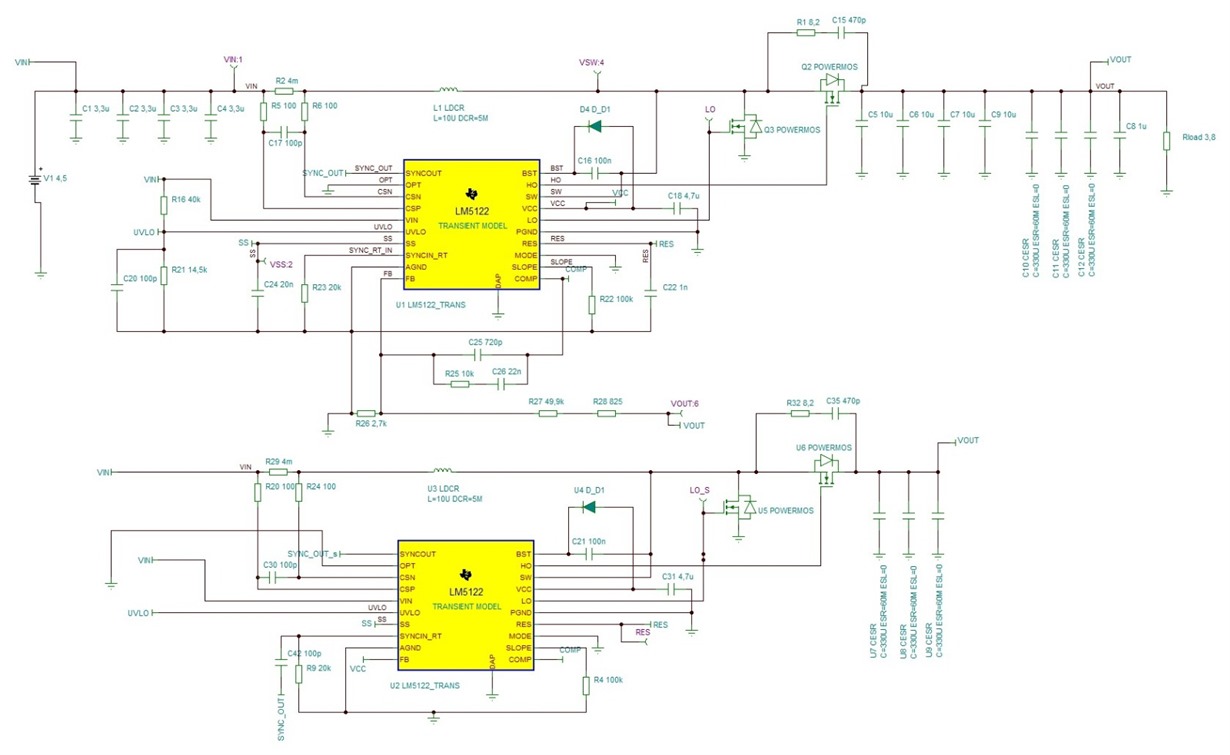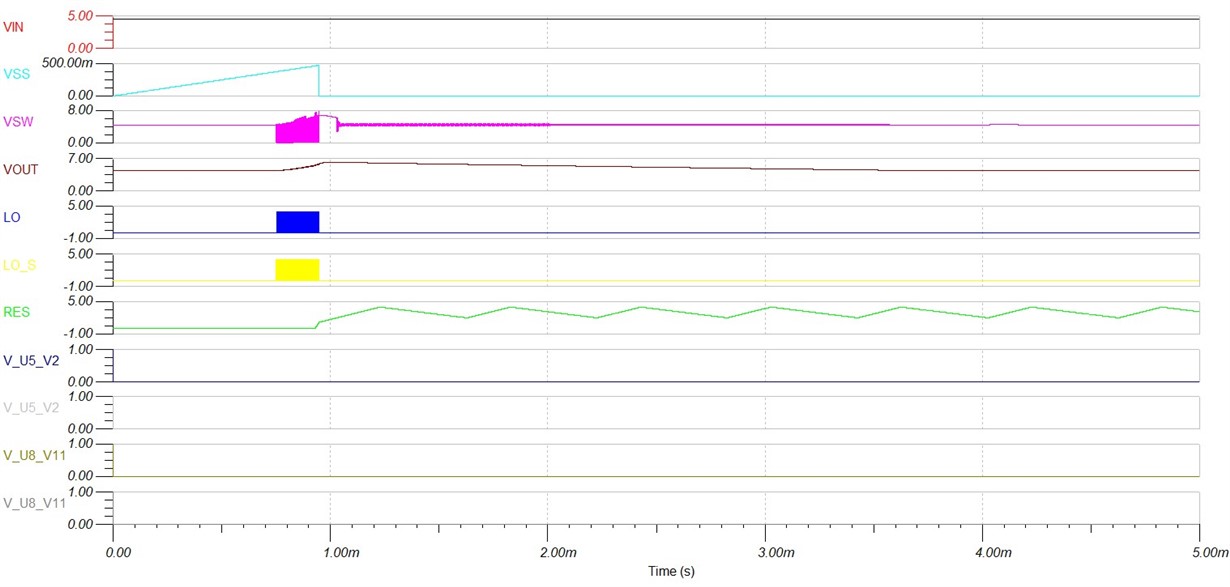Other Parts Discussed in Thread: TINA-TI
Tool/software: WEBENCH® Design Tools
Dear Forum-reader,
We try with the LM5122 in Dual-phase design ( Design = originally from the TI - site ) to convert an Input voltage (3 - 4,5Vdc / 50Amp) to an Output voltage of 24Vdc.
We changed R21 (for setting the UVLO-Pin of LM5122 for lower input voltage). (We used the formulas in the LM5122 pdf document)
Input Voltage:4,5V is minimum start-up voltage ... and we want it to work to as low as 3V (or 3,5 - 4V) if possible with a continuous amount of current (max 50A continuously).
The output voltage is already set to 24Vdc. (with R26, R27, R28).
We changed the filter between the Comp- and FB-Pin (R25, C25, C26). (We used the formulas in the LM5122 pdf document)
We changed the Input source to a battery (settings: 4,5V and tried it also with 5V)
WE USED =NOT= Webench simulation tool = BUT : TINA-TI Simulation tool for the schematic below.
Questions:
1) Is it possible to change the simulation speed ? (it takes about 1 to 2 hours)
2) If we look at the simulation values, the Vout is not reaching 24Volts.
=> Is there something we do wrong ?
3) If we look at the simulation values, the LO and LO_S Fet switching gate signals stop before the 1ms... strange.
=> How and why does this happen ?
Who can help us out with these questions ?
Thank you for your time,
Anthony and Heba.



